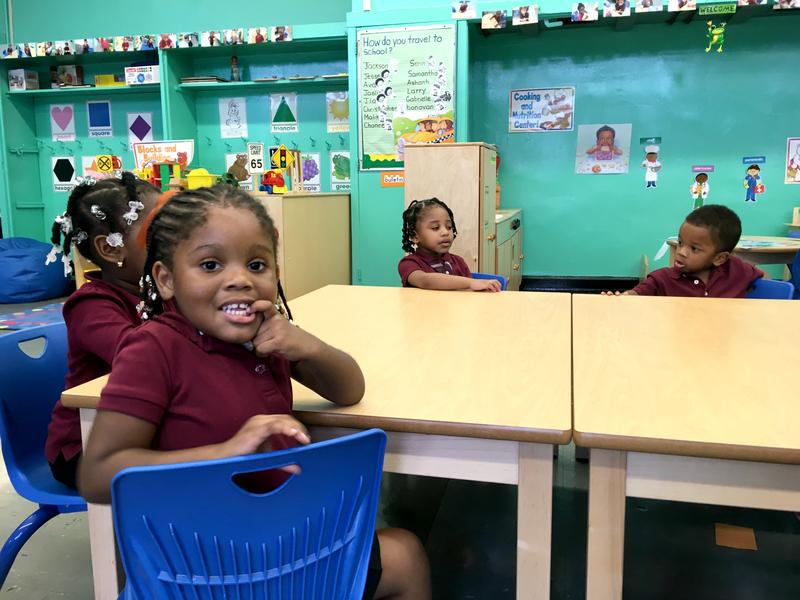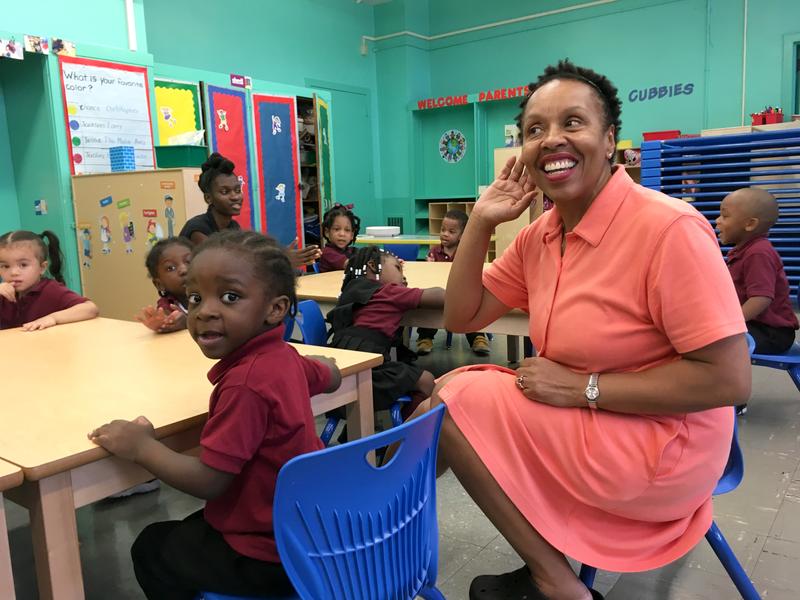
New York City's preschool expansion is not happening in quite the same blitz as its massive scale-up of classes for 4-year-olds, when the city added nearly 50,000 full-day pre-k seats to the school system over the course of two years.
Now, for the first time, the city's public schools are offering programs targeted at even younger toddlers: 3-year-olds.
The first phase of expanding preschool is taking shape in District 7 in the South Bronx and District 23 in Brooklyn, which includes Ocean Hill, Brownsville and parts of East New York.
"When the public got wind of 3-year-olds coming into the public schools, I was like, 'Yes!'" said Linda Harris, principal of P.S./I.S. 323 in Brownsville.
Harris, herself a former pre-k teacher, was so enthusiastic about the program that she volunteered to make space for the little ones.
"Some people might say, 'Oh, it's too early. They need to play and they need to have fun,'" said Harris. "But they are playing and having fun and learning in a structured environment.'"
As of the beginning of this school year, the city has doubled the number of public preschool seats offered between Districts 7 and 23, bringing the total number of children in these programs to nearly 1,400 — a number that the city expects to increase as more families enroll their children this fall.
Some of those classes are run by the Administration for Children's Services, while others are offered through the public schools, like P.S. 323, or through community organizations. By 2019, the plan is for public preschool to come under the umbrella of the education department.
"The way we see it is that early education is an essential part of the public school system, because it prepares children and helps support families to help ensure that every child can meet their potential," said Deputy Chancellor Josh Wallack, who is overseeing the preschool expansion.
While the initial expansion of what the city calls "3-K" is concentrated in two high-poverty school districts, the city's plan is to expand the program two districts each school year, providing a seat to any 3-year-old who wants one in those areas.
Some critics have questioned the wisdom of expanding early childhood programs to families that can afford private preschools, given the myriad of other public school priorities — like addressing school overcrowding, decreasing class sizes or just generally providing more resources and enrichment programs to schools.
But scholars have documented how the United States is woefully behind other developed countries when it comes to spending on early childhood education.
"Schooling needs to begin at 3," said Ajay Chaudry, an author of the book Cradle to Kindergarten, who spoke about the issue at a panel last month at New York University. "And we wouldn't make our K-12 system targeted just toward low-income kids."
Disparities emerge early, he said, when wealthier families in the U.S. pay to enroll their 3-year-olds in some type of preschool program. The result is that just over half of American 3-year-olds are enrolled in preschool, compared to near universal enrollment in countries like Germany and the United Kingdom.
This year, New York City is spending $36 million on its preschool expansion, which so far has paid for hiring teachers, paraprofessionals and social workers; outfitting classrooms; and bringing in instructional coaches to support teachers with bi-weekly classroom visits.

